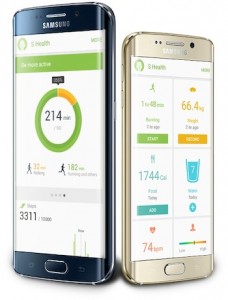 Considering recent events, big name consumer brands are more likely than ever to move into regulated medical devices.
Considering recent events, big name consumer brands are more likely than ever to move into regulated medical devices.
Two weeks ago Apple CEO Tim Cook told a newspaper that while his company wouldn't put the Apple Watch through the motions of an FDA clearance process, Cook "wouldn't mind putting something adjacent to the watch through it." He said that before adding maybe that'd be an app or something else. At the time, I wondered if maybe it'd be a strap for the watch -- one that sported its own sensor array.
That quote from Cook was surprising considering how the company has appeared to have steered clear from FDA regulation over the years as it encouraged other companies to build FDA-regulated apps and iOS-connected medical devices.
One of the very first such iOS-connected, FDA-cleared medical devices was Sanofi's iBGStar, an iPhone-connected blood glucose meter, manufactured by Boston-area medical device company AgaMatrix. AgaMatrix was founded by Sonny Vu and Sridhar Iyengar, who went on to found fitness wearable company, Misfit, which watch maker Fossil just acquired for $260 million.
Misfit wasn't always going to be a fitness-focused wearable company though. Vu and Iyengar left AgaMatrix in 2011 to take their considerable experience in connected medical devices and channel it into a new mobile health-focused venture.
“[Sridhar and I] totally missed the big internet boom,” Vu told MobiHealthNews just after he left AgaMatrix in 2011. “We’re not going to miss the mobile health one. It’s rare that you get to stand at the edge of a big wave and know that it’s going to come and have the chance to decide if you’re going to join in or not. We’re going to do it. I’m not missing this revolution.”
The entrepreneurs stood apart from other hopefuls at the time because their plan was, in Vu's words, to "do all the hard stuff."
"Let’s do something that is reimbursed," Vu said. "Let’s do hardware. Let’s do regulated devices. Let’s do chemistry. Let’s do something that requires you to work with physicians to get adoption. And then let’s layer services on top of that. Our feeling has been that mobile health has been a little too thin. If you are just doing software and services — awesome, God bless you — but if you have no anchor reimbursement product then it will be hard to get substantial revenue early.”
In its early years Vu was quick to point out that Misfit was not created to make another fitness tracker, but the company's stylish fitness wearable, Shine, was the backbone of its business through its acquisition. Clearly Misfit managed to generate substantial enough revenue to cause it to focus on fitness and wellness and then move into other smart objects, like its connected lightbulb, Bolt.
Misfit never did launch a medical device. It didn't do chemistry. And it didn't work with physicians to get adoption. It did, of course, build products and worldwide distribution for them culminating in what looked to be a successful exit.
In an email to MobiHealthNews this week Vu admitted that following the acquisition by Fossil, his team has a lot more to do, and he's not sure when the company might get the chance to pursue a regulated medical device:
"However, the capabilities are still there and our medical team, headed by Dr. Matthew Diamond, our medical director, is going to be as active as ever engaging us in healthcare discussions and doing our various on-going clinical studies," he wrote.
Misfit, as part of Fossil, could still get into medical devices. But which of these consumer brands is more likely to make a regulated move first? Apple's CEO is publicly hinting at such a move, while, despite Fossil's new connected devices chief's considerable experience, that company is the dark horse in this race.
Samsung, of course, beat both to the punch with a special FDA-cleared version of its S Health app two years ago, but the company has been relatively mum on the app's deployment since.
It's clear now at the end of a busy 2015 -- with the Misfit acquisition, Fitbit's IPO, and Jawbone's continued struggles -- that the wearable device space has matured. The next step for it is on the other side of the 510(k) clearance process.



















